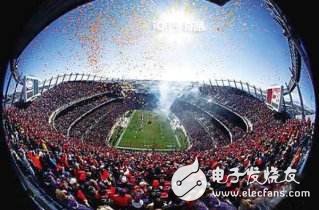On the morning of February 5th, Beijing time, U.S. media reported that the annual Super Bowl is set to captivate millions of viewers worldwide. While many tune in for the high-stakes game itself, others are equally drawn to the commercials that air during the event. These ads often spark discussions about which ones resonate most with audiences and which fall flat. Additionally, there’s growing interest in the cutting-edge technology that powers the Super Bowl experience. Over the years, the event has become a stage for showcasing the latest innovations. Here’s a look at some of the ads and technologies that made headlines this year.

**Advertising Trends**
For years, brands have competed fiercely for ad slots during the Super Bowl, with creative campaigns often teased before the big day. In 2018, one notable trend was the inclusion of the #MeToo movement in ads, prompting conversations about how women are portrayed. According to Ad Age’s Jeanine Poggi, while women made up nearly half of the audience last year, most ads were still targeted toward men. She noted that over the past decade, 76% of Super Bowl ads featured male leads, and 14% had no female characters at all. This shift reflects a growing demand for more inclusive and diverse storytelling in advertising.
**Halftime Show Innovations**
Last year’s halftime show featured Lady Gaga, who was accompanied by 300 Intel drones lighting up the sky in a dazzling display. Meanwhile, Justin Timberlake’s performance sparked a social media frenzy, proving that technology plays a key role in enhancing the visual and emotional impact of these performances.
**Venue Technology and Safety**
The U.S. Bank Stadium is equipped with the latest in sports technology, including 1,300 Wi-Fi hotspots to keep fans connected and sharing the action in real time. The venue also features thousands of large screens and 365 doors with surveillance systems to ensure safety and smooth operations.
**Game Enhancements**
While players and fans remain human, technology continues to elevate the experience. A week before the Super Bowl, Minneapolis hosted a sports tech startup competition. This year’s event will use augmented reality (AR) to help fans choose their seats. Players will also wear advanced helmets designed to minimize injury from collisions.
**AI and Real-Time Reporting**
Artificial intelligence has already made its mark, with Swarm AI accurately predicting last year’s winner and final score. Will it do it again this year? Natural language generation (NLG) technology will also be used to provide instant game updates and scores, making the coverage faster and more efficient than ever before.
As the Super Bowl continues to evolve, it’s clear that technology isn’t just a backdrop—it’s a central part of the experience, shaping everything from the ads we see to the way we watch and interact with the game.
Qiuck deatail:
- Synchronization mechanism for multi-screen playing
- Powerful processing capability
- Comprehensive control plans
- Synchronous and asynchronous dual-mode
- Dual-Wi-Fi mode
Other Hardware Features
- 4 Ethernet ports, loading capacity of each port up to 2,300,000 pixels, with the maximum width of 4096 pixels and maximum height of 1920 pixels
- Wired Gigabit Ethernet
- Stereo audio output
- HDMI Loop
- HDMI input and auto full-screen display
- 2 USB ports allowing for USB playback
- Onboard light sensor connector allowing for automatic and scheduled brightness adjustment
Application:
Movie theaters, clubs, stages.
* Business Organizations:
Supermarket, large-scale shopping malls, star-rated hotels, travel agencies
* Financial Organizations:
Banks, insurance companies, post offices, hospital, schools
* Public Places:
Subway, airports, stations, parks, exhibition halls, stadiums, museums, commercial buildings, meeting rooms
* Entertainments:
Video wall processor,LED Display Screen Processor,video controller
Guangzhou Chengwen Photoelectric Technology co.,ltd , https://www.cwleddisplay.com